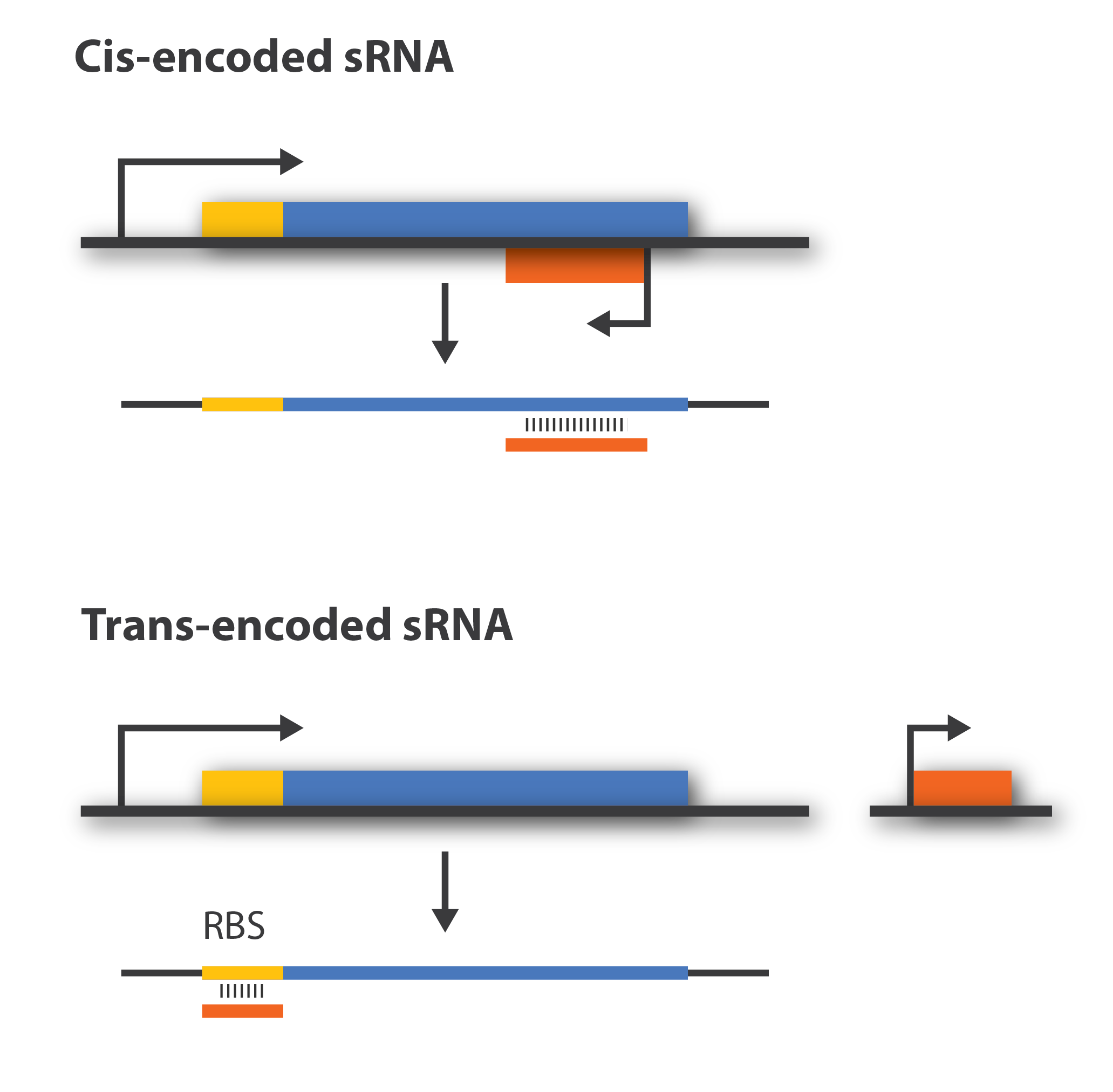Team:DTU-Denmark/What is Cis versus trans
From 2011.igem.org
(→Cis-acting versus trans-acting sRNA) |
|||
| Line 3: | Line 3: | ||
== Cis-acting versus trans-acting sRNA == | == Cis-acting versus trans-acting sRNA == | ||
[[File:DTU1_Cis_trans.png|300px|thumb |right|Difference of genomic location for cis- and trans-encoded sRNA. Orange boxes illustrate the sRNA, blue boxes the target mRN, and yellow boxes the ribosome binding site.]] | [[File:DTU1_Cis_trans.png|300px|thumb |right|Difference of genomic location for cis- and trans-encoded sRNA. Orange boxes illustrate the sRNA, blue boxes the target mRN, and yellow boxes the ribosome binding site.]] | ||
| - | Regulatory sRNAs are divided into different sub-groups depending on their genomic locations. '''Cis-encoded''' or '''antisense''' sRNAs are encoded just opposite the one gene they regulate whereas '''trans-encoded''' sRNAs are located somewhere else in the genome and can aim at multiple number of target mRNA. Antisense RNA share extensive sequence complementarity with its target mRNA and hence do not require the RNA chaperone, Hfq, to stabilize the complex. This is in contrast to trans-encoded sRNAs which often only posses a complementary base-pairing region of 6-20 nucleotides and often require Hfq<span class="superscript">[[#References|[1]]]</span>. We are focusing on trans-encoded sRNA in the project, so '''whenever we write sRNA we implicit mean trans-encoded sRNA'''. | + | Regulatory sRNAs are divided into different sub-groups depending on their genomic locations with respect to its mRNA target. '''Cis-encoded''' or '''antisense''' sRNAs are encoded just opposite the one gene they regulate whereas '''trans-encoded''' sRNAs are located somewhere else in the genome and can aim at multiple number of target mRNA. Antisense RNA share extensive sequence complementarity with its target mRNA and hence do not require the RNA chaperone, Hfq, to stabilize the complex. This is in contrast to trans-encoded sRNAs which often only posses a complementary base-pairing region of 6-20 nucleotides and often require Hfq<span class="superscript">[[#References|[1]]]</span>. We are focusing on trans-encoded sRNA in the project, so '''whenever we write sRNA we implicit mean trans-encoded sRNA'''. |
Revision as of 12:04, 21 September 2011
Background
Cis-acting versus trans-acting sRNA
Regulatory sRNAs are divided into different sub-groups depending on their genomic locations with respect to its mRNA target. Cis-encoded or antisense sRNAs are encoded just opposite the one gene they regulate whereas trans-encoded sRNAs are located somewhere else in the genome and can aim at multiple number of target mRNA. Antisense RNA share extensive sequence complementarity with its target mRNA and hence do not require the RNA chaperone, Hfq, to stabilize the complex. This is in contrast to trans-encoded sRNAs which often only posses a complementary base-pairing region of 6-20 nucleotides and often require Hfq[1]. We are focusing on trans-encoded sRNA in the project, so whenever we write sRNA we implicit mean trans-encoded sRNA.
References
[1] van Vliet, Arnoud Hm, and Brendan W Wren. “New levels of sophistication in the transcriptional landscape of bacteria.” Genome biology. 10, no. 8 (2009).
 "
"









